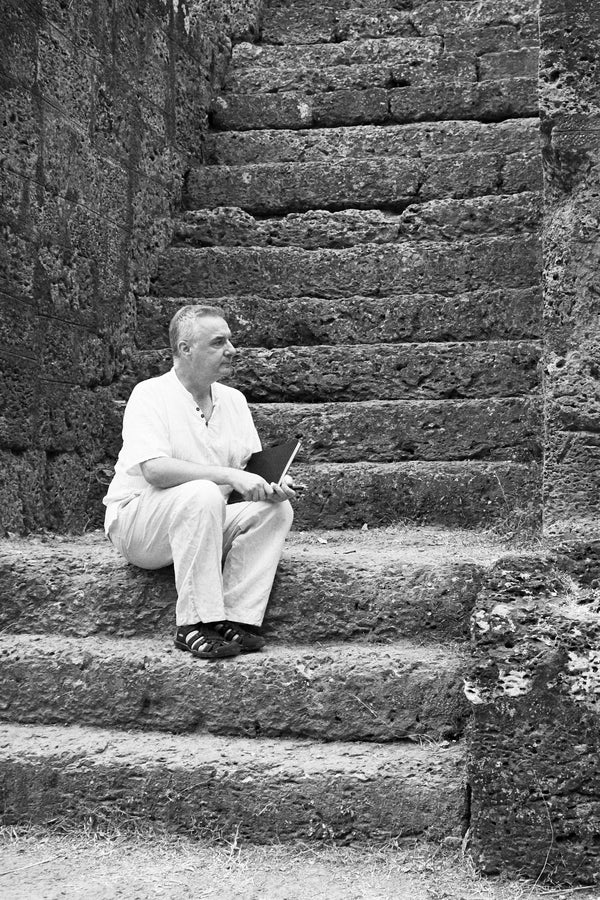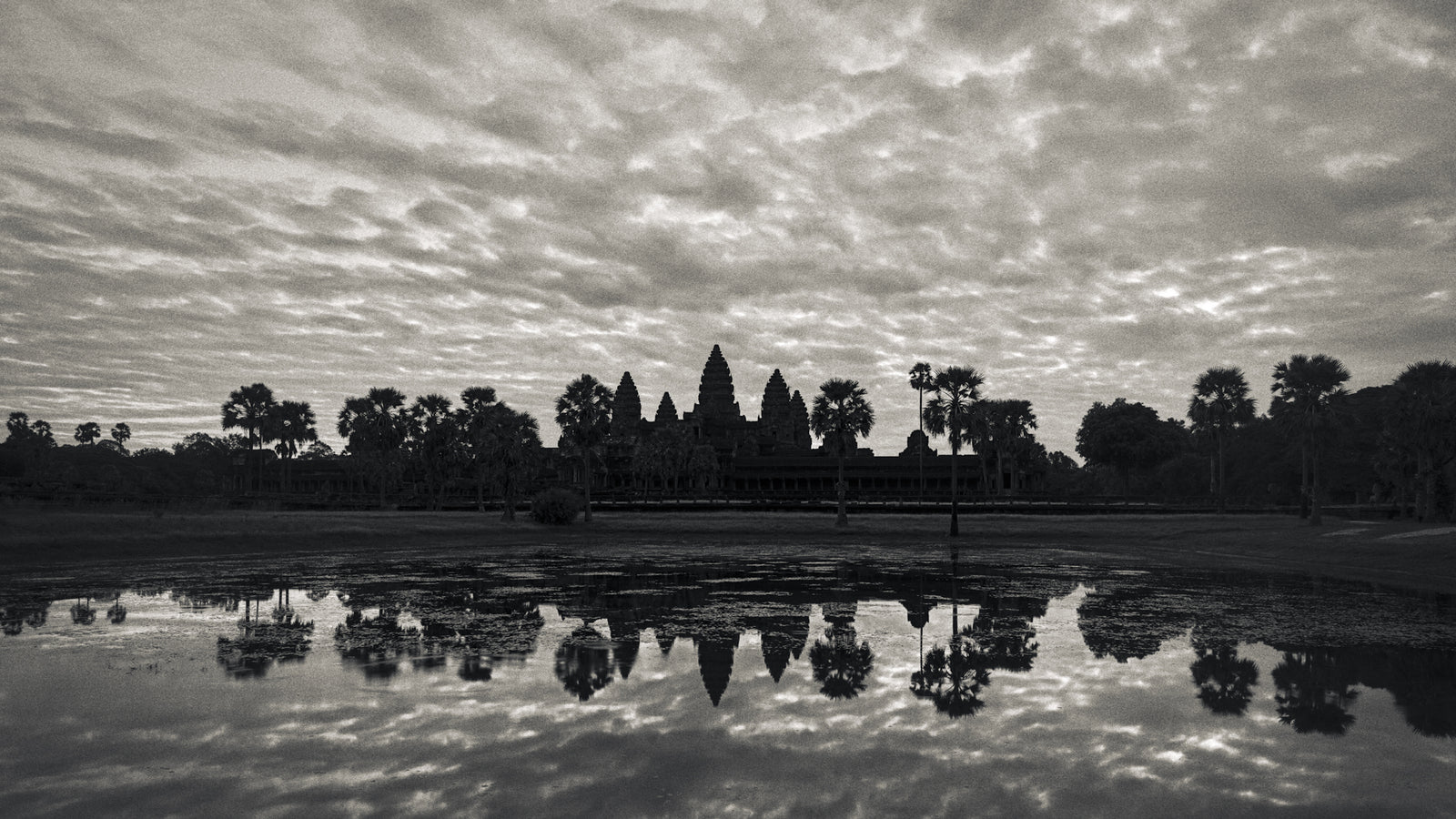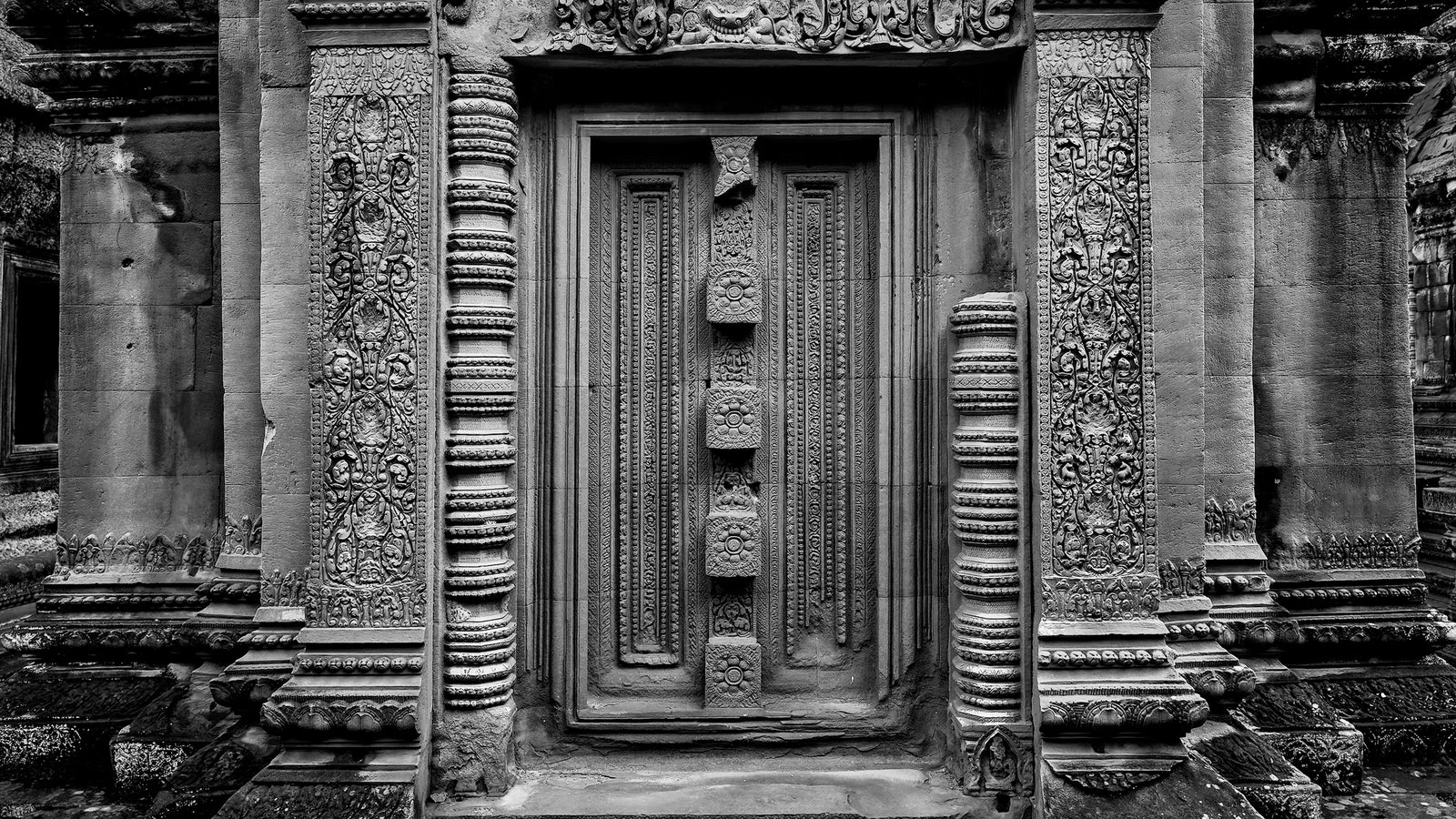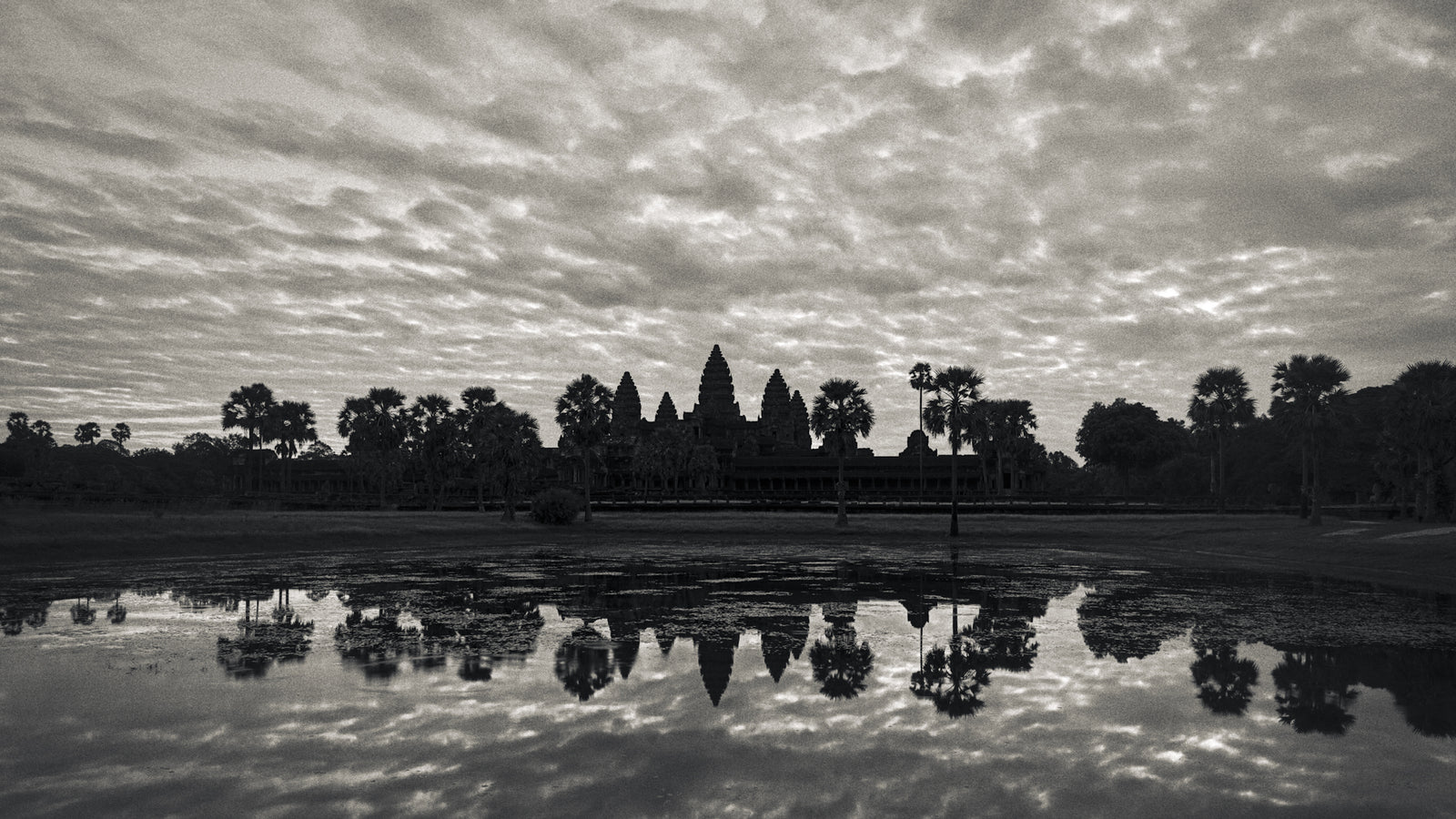Complimentary worldwide shipping on orders over $400 · No import tariffs for most countries
Complimentary worldwide shipping on orders over $400 · No import tariffs for most countries
Neak Poan Temple
2 min read
| Date: | Late 12th – early 13th century CE |
| Style: | Bayon |
| King: | Jayavarman VII (reign 1181 – 1220 CE) |
| Cult: | Mahayana Buddhist |
Neak Poan (or Neak Pean) (Khmer: ប្រាសាទនាគព័ន្ធ) sits at the centre of Preah Khan Temple's baray, Jayatataka. It symbolises the mythical lake Anavatapta whose waters could cure illnesses — a lake located at the centre of the world, somewhere in the Himalayas, feeding the four sacred rivers: the Indus, the Oxus, the Tarim and the Ganges. The four rivers fertilise the territories populated by, respectively, lions, bulls, horses and elephants.
A square laterite enclosure with four entrances delimits the site. Within it, a complex network of ponds and basins could once be found. Today, only the central group survives: four ponds lined with sandstone steps surround a larger one with the sanctuary at its centre.
The waters and magical herbs of Neak Poan were said to heal the faithful. Images of Lokeshvara, the Bodhisattva of compassion who could cure illnesses, are omnipresent in the temple, as they are at nearby Prasat Krol Ko which was closely linked in the healing process.
The Preah Khan Temple stele contains a description of Neak Poan:
... In Jayacri [Preah Khan Temple] ... this King [Jayavarman VII] has placed the Jayatataka as a mirror of fortune, coloured by gems, gold and garlands... inside there is a famous island, whose charm is derived from the basins which surround it. It washes away the mud of the sins of those who come to its contact, it acts as a boat to cross the ocean of existences.
The 'boat to cross the ocean of existences' is a reference to the legend of the horse Balaha. Lokeshvara once took the shape of a horse to come to the rescue of shipwrecked sailors stranded on an island. The sailors, attracted by the seductive women populating the place, soon realised that they were ogresses whose favourite meal was sailors!
At Neak Poan, the sailors are represented clinging to the flanks and tail of the statue of Balaha, surrounded by water. They are not only escaping danger, they are embarking on a spiritual journey. Balaha is bringing them to the sanctuary, and hence to salvation. The sanctuary, that once housed a statue of Buddha, represents the 'boat to cross the ocean of existences'.
Map of Neak Poan
Also in Angkorpedia
Join My Studio Journal
Receive occasional letters from my studio in Siem Reap—offering a glimpse into my creative process, early access to new fine art prints, field notes from the temples of Angkor, exhibition announcements, and reflections on beauty, impermanence, and the spirit of place.
No noise. No clutter. Just quiet inspiration, delivered gently.
Subscribe and stay connected to the unfolding story.

Join My Studio Journal
Receive occasional letters from my studio in Siem Reap—offering a glimpse into my creative process, early access to new fine art prints, field notes from the temples of Angkor, exhibition announcements, and reflections on beauty, impermanence, and the spirit of place.
No noise. No clutter. Just quiet inspiration, delivered gently.
Subscribe and stay connected to the unfolding story.



